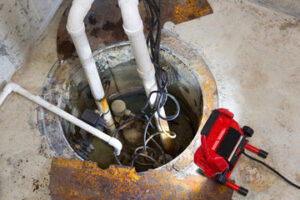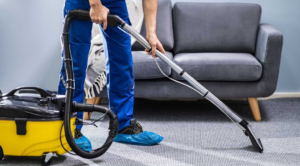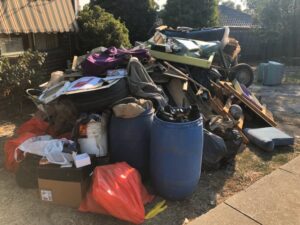Concrete is not indestructible and it wears down over time. Repairing concrete problems promptly helps prolong its lifespan and avoid costly replacement activities.

There are several types of concrete repair. Structural repairs address structural issues while decorative repair addresses aesthetic concerns. Concrete can also be repaired with a variety of materials. Visit Website to learn more.
Concrete surfaces are exposed to a number of damaging conditions. Whether it is rain, ground movement, or the presence of certain chemicals, cracks in concrete will eventually appear. However, this damage can be easily repaired with proper maintenance and the right repair products. Crack repair in concrete is the first step toward a strong, durable surface.
Before any concrete repair begins, it is important to identify the type of crack and the condition of the surrounding concrete. It is also essential to understand the underlying cause of the cracking. If the crack is caused by a structural problem, such as insufficient support, it will not be permanently repaired.
The most common concrete repair method is to fill the crack with a concrete sealant. This can be purchased in a wide variety of formulations to suit the application. Some of these products are made with polyurethane, which is extremely resistant to chemicals and other substances that could degrade concrete. Others are epoxy or latex based and require less labor to apply. It is important to clean the area of a crack thoroughly before applying any product. This includes removing any loose gravel or debris, as this can keep the repair material from adhering properly to the surface.
Narrow cracks in concrete may be fixed using a process known as stitching. This consists of drilling holes in the sides of the crack and then connecting them with metal rods. This allows the concrete to expand and contract in a more controlled manner, reducing the stress placed on the cracks.
Larger cracks can be filled with a routing and sealing method, which involves cutting the concrete to create a backward-angled V shape. This provides more space for the sealant to adhere and helps prevent future cracking. This method is typically used for dormant cracks, but it can also be applied to active cracks if the proper sealant is used.
Another option for fixing cracks in concrete is to use hydraulic cement. This is a liquid that fills thin cracks to full depth. It is important to dry the cracks before using this product and to choose a product that is appropriate for the environment.
Repairing Splits
Concrete is one of the most popular building materials in use around the world. It’s strong and durable, but even the toughest concrete is prone to damage over time. Cracks, chips, and sunken areas are just some of the many problems that can arise in both old and new concrete surfaces. Fortunately, there are repair methods available to address these issues and restore the integrity of your concrete surface.
When repairing splits in concrete, it’s important to start with the right tools and materials. This ensures that the concrete repair is done correctly and will last for a long time. Before attempting any repairs, it’s also important to understand the cause of the split and how it can be fixed.
Often, splits are caused by poor workmanship during construction. If this is the case, it’s essential to hire a professional to carry out the repairs. A concrete restoration contractor will be able to inspect the damaged area and make recommendations accordingly.
To begin the repair process, it’s necessary to remove any existing material from the crack in the concrete. This can be difficult if the crack is deep and wide, but it’s important to do so in order to ensure that the repair will hold. If any loose material is left behind, it can prevent the concrete filler from adhering to the rest of the concrete and eventually causing the split to reopen.
For larger chips and pitted areas, a mortar mix can be used to fill the damage. The mix should be made with a combination of 1 part Portland cement, 3 parts masonry sand, and just enough water to form a thick paste. It’s important to moisten (but not drench) the area before applying the mortar mix, and to press down firmly as you work to eliminate any air pockets.
The concrete patch should then be cured as per the manufacturer’s instructions. When the patch is cured, it’s important to test the strength of the concrete using a rebound impact tester. This device measures the strength of a concrete structure by using a spring-powered hammer to hit it against the surface and then measuring how far it bounces.
Repairing Sunken Areas
Concrete is the most widely used building material in the world, and while it’s very durable, concrete surfaces can deteriorate over time. Weathering, heavy foot or vehicle traffic, and settling can all lead to damage that needs repair. Luckily, there are many ways to fix damaged concrete, and some of them can be completed quickly and inexpensively.
Surface repairs are typically made using a patching material that fills in cracks, spalling, or surface wear. These types of repairs are non-structural and may need to be repeated periodically as the patching material can wear down over time. For more extensive damage, however, full concrete replacement is usually necessary.
When repairing sunken areas, it’s important to choose the right concrete repair product for the job. Look for products with a high level of performance, as this will ensure that the repair is long-lasting and will not need to be replaced. Also, be sure to use a product that is eco-friendly and safe for the environment.
The use of foam or urethane injections can be an excellent solution for sunken concrete repairs. These products expand to many times their original volume, forcing sunken concrete back up to its proper position. They can be used on a variety of surfaces, including driveways and pool decks. In addition, these types of concrete repair solutions are quick and easy to implement, allowing homeowners to use their repaired surfaces almost immediately.
Another option for sunken concrete repair is mudjacking. Mudjacking involves forcefully pumping slurry materials (mud) under the concrete to raise it back up to its original position. Mudjacking is less expensive than traditional concrete repair methods, but it is not as effective.
Once the repair is complete, it’s important to perform tests on the concrete to determine its strength and durability. A common test is the rebound test, which uses a spring-powered hammer to measure how far the concrete bounces. This method is fast and accurate, but the results can vary depending on debris or internal rebar. It is recommended that a professional conduct the testing to ensure accurate results.
Repairing Leaks
Concrete can withstand the stresses of everyday use, but it can be damaged by water. Water leaks are a major cause of damage to concrete structures and building, and if not addressed quickly, will lead to costly structural repairs.
The best way to stop a leak is to prevent the water from getting into the concrete in the first place. This can be accomplished by properly designing the structure and securing the plumbing lines in the slab. Leaks in concrete are most commonly caused by faulty plumbing installations or shifts in the soil beneath the slab that weaken and crack metal plumbing lines.
Once the leaking concrete is exposed, there are several options for repair. The simplest and most cost effective option is to fill the leak with a quick-setting cement product like Kryton’s Krystol Plug(tm). This is a hydraulic cement that uses crystalline technology to respond to water intrusion. It forms insoluble needle-shaped crystals to plug capillaries and micro-cracks, allowing no more water through the concrete.
If the leak is deeper in the concrete, a drilled chase hole can be filled with an epoxy grout. This is a thicker product that will not only fill the chase hole, but it will also fill the surrounding area of the concrete and seal the leak. This type of product will also work in cases of high hydrostatic pressure.
Another method of repairing a leak in concrete involves using a patch or a repair mortar. These are cement-based materials that can be troweled to create a smooth surface, making the patch or repair less noticeable. The mortar will be designed to bond with the existing concrete and is typically made of Portland cement.
In addition to addressing the damage caused by water, a professional contractor will provide a range of other services for your concrete restoration project. This can include cleaning and sealing the concrete surface, repairing any existing cracks or flaws, and even removing and replacing the concrete.
Choosing a contractor with the right experience and expertise is crucial for your concrete repair restoration project. The contractor will have the skills, equipment, and high-quality materials needed to ensure your concrete repair is done correctly and will last for years to come.








